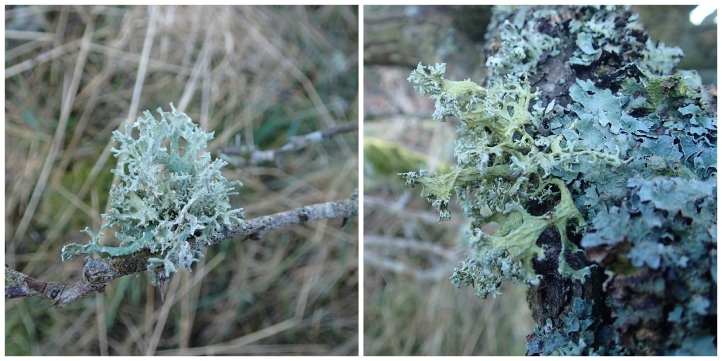A night in Northumberland and a couple of days walking felt particularly opportune in view of the anger and upset we feel about what’s happening in the USA at the moment, particularly when one of the aims was to track down some 4000 year old rock art. It’s always good to have current events put into their historical perspective!
Our first visit was to Goatscrag Hill, between Ford and Doddington. I’d used the Modern Antiquarian website to get a grid reference and print out the appropriate section of OS map but neglected to look at the more detailed instructions about exactly where to find the famous carvings so we had a bit of a hunt to find these. Martyn finally found four, highly stylised carvings of deer, about 10 cm across, on a vertical slab of sandstone underneath the overhang which forms a rock shelter.

One deer is more detailed and seems much more life-like than the others. Maybe a later addition?

Little is known about the carvings – there are very few representations of animals amongst the plethora of cup and ring marked stones in the UK but the evidence seems reasonably strong that these are prehistoric. The crag’s sheltered location has helped the carvings resist the ravages of time – it faces south and is a warm and sheltered spot on the chilly day we visit. I don’t suppose the early inhabitants were that bothered about the scenic view over the Cheviots but it would have been a good vantage point for spotting potential attackers!

Looking west from the rock shelter below Goatscrag Hill
Our second destination was Chatton Park Hill, not far from the lovely Percy Arms hotel where we stayed on Saturday night. It was getting cool by this time, as the sun dipped down, but we scrambled up from the road to the trig point on top of the hill and into the remains of the hill fort beyond. It’s difficult to convey the clear sense of place in a photo taken from the ground but Google Earth shows the double earthwork clearly. I’m sure I’m not the first to wonder, looking at the shape from above, whether the concentric circles in many rock carvings are not some sort of representation of ancient settlements.

Chatton Park Hill settlement, courtesy of Google Earth
We ran out of time to hunt for the many cup and ring marked stones scattered over the hill top and below the rock shelter at nearby Kettley Crag but did find the one in the centre of the settlement, full of water and a red alga, probably Haematococcus. Without his usual sampling kit, Martyn was reduced to using a Co-op divi card and empty Twix wrapper to collect a sample!

The beautiful views north from here, over the meandering River Till, make this another prime defensive site.

North from Chatton Park Hill, across the valley of the River Till
It’s still too early in the year for much in the way of plants to look at but perhaps that makes it easier to notice the smaller mosses and lichens which get overlooked later in the year. The sandstone around Goatscrag is host to a multitude of lichens, plenty of Cladonias, some with the bright red apothecia which earn them the name ‘Devil’s matchsticks’.

Equally interesting, to me was the observation that, in this part of the world, trees such as Hawthorn are festooned with foliose grey lichens such as Evernia prunastri (left) and Parmelia sulcata.

These grey lichens seem to fill the niche occupied by yellow Xanthoria ucrainica on the trees around where we live in Durham (see My real oak tree), especially along roadsides – presumably an indicator that the environment here is rather less nutrient enriched.
Incidentally Evernia prunastri, also known as oakmoss, may be another link to earlier inhabitants of Northumberland – the soft, strap-like thallus was collected and used as a dyeing agent and, in more recent times, as a perfume ingredient.